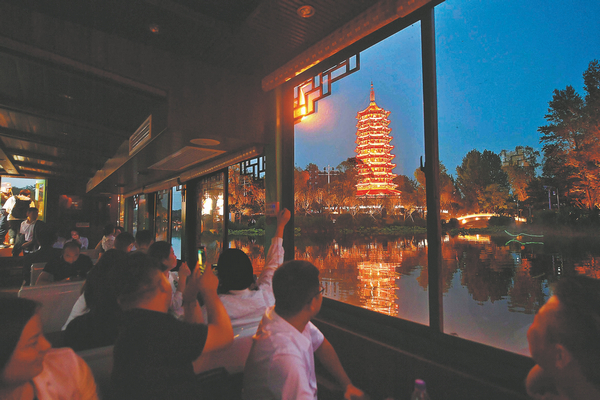
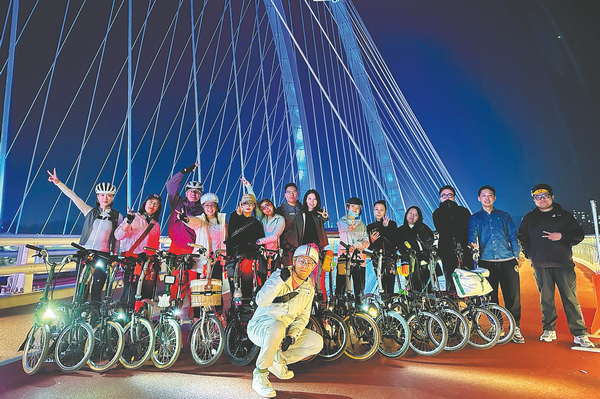
Yu Nuo took out a Beijing map and spent a month from June studying the highways and byways and doing fieldwork before coming up with a cycling route that traces the shape of the capital city's Chinese name.
"I wanted it to be symbolic and pique public interest, while making sure all the turns are friendly to cyclists," says Yu, who has been assisting the cycling club Buyiban based in Yizhuang in Beijing's southeastern suburb.
The route runs about 20 kilometers across well-known hutong lanes in the city's downtown area, without having to go against traffic or take an overpass.
"It's perfect for observing local life, such as residents playing chess under streetlights and taking walks, while experiencing diverse business activities, commercial streets, urban views and famous scenic spots at night," she says.
Yu's route has been among several picked up and promoted by the Beijing Municipal Bureau of Culture and Tourism for night riders in August.
They string together major cultural landmarks, such as the Bell and Drum Towers and Central Axis, as well as immersive cultural experiences, including Peking Opera and tea rituals. Those routes are aimed at better tapping into the city's cultural and tourism resources.
Yu found more than 1,200 people bookmarked her route after she posted it on the lifestyle-focused social media platform Xiaohongshu.
"Many night joggers have also followed it," she says. "The whole city has well-developed cycling lanes, making it ideal for people who mostly have to spend the daytime working in the office to then chill and exercise at night," Yu says.
Night cycling is part of Beijing authorities' efforts to demonstrate the nocturnal charm of the city and enable more people to appreciate a slower pace of life.
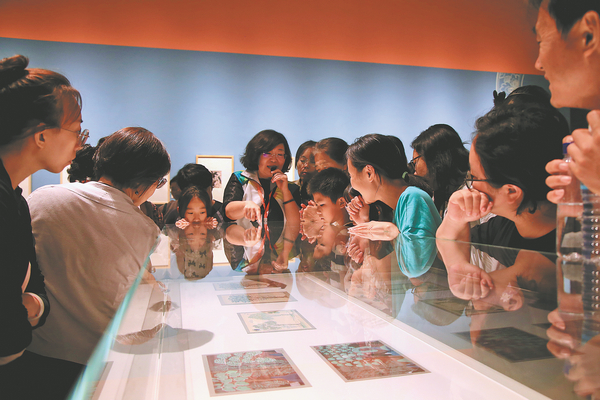
In late August, they rolled out a moonlight tours guide that covers more than 250 programs, including exhibitions, light shows and concerts at various sites, ranging from scenic spots, camping sites to museums and galleries.
Since being included in the night tours guide, Shougang Park in western Beijing's Shijingshan district has packed in music and pop culture enthusiasts for its concerts.
"They sang along with the artists onstage and turned the park into a recreational hot spot," says Zhang Chao, who lives in the neighborhood and recently visited the park at night.
Once an industrial steelmaking facility, the park has been turned into a wonderland of multicolored lighting. Many of the old factory buildings in the park have been transformed into creative art studios, uniquely styled restaurants and bars.
"Under the night sky, the blast furnaces, cooling towers as well as the crisscrossing pipes give both a strong industrial vibe and a surreal atmosphere as they are bathed in flickering lights," Zhang says.
Additionally, employees who used to work for the former steel plant have been invited to walk visitors down the history of the park.
The Shijingshan culture and tourism bureau has worked with the park's administration and planned a series of night activities lasting till the end of October.
Each activity will carry a distinctive theme and invites artists of different genres, according to the park's administration.
Other parts of the capital have also arranged cultural and tourism experiences to spice up the nightlife.
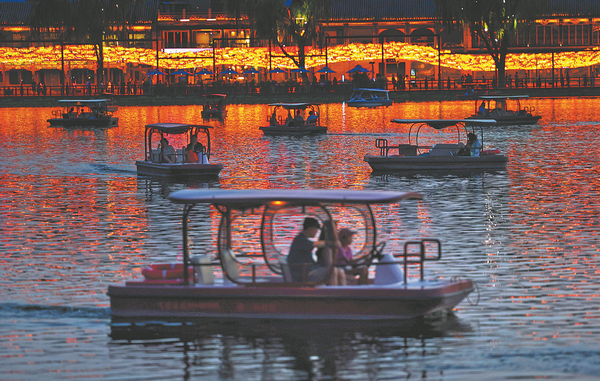
In Tongzhou, an eastern district of Beijing, market fairs, stadiums and libraries are lighting up the night, and boats carrying passengers meander the Grand Canal.
Guo Xiangbing says she has felt her neighborhood come alive since the Yuelianghe (Moon River) fair opened during the Labor Day holiday in May.
The fair on the bank of the canal has attracted more than 300 businesses and remains a tourism hot spot, with the number of daily night visitors peaking at 30,000, according to the fair's organizers.
"The neighborhood has a good environment, with both woodlands and a river, but there were no nearby shopping areas until the fair took place," Guo says.
She often takes her grandson to the fair to enjoy gourmet food and creative cultural items, which have spiced up the social life of her family, Guo adds.
Su Beibei has been running a cold drinks and spicy hotpot business at the Yuelianghe fair for more than three months. She can sell 300 to 500 drinks and 100 to 200 servings of hotpot a night.
"Sometimes, we're sold out before the fair ends and visitors who come late have to wait until the next time," Su says.
She says she will continue her business in the fair, not just because of the heavy foot traffic but the well-organized management.
"They (the management personnel) have strict standards for hygiene, quality and product styles. Once a vendor meets these requirements, the market doesn't interfere with their operations," Su says.

As the fair's popularity grows, more vendors have shown a desire to join in.
"The market started with a focus on families with children, but has since expanded to cater to entire families and young consumer groups, with an increasing variety of businesses," says Quan Ping, an official in charge of the fair operations.
"Each week, we replace vendors whose quality doesn't meet standards, while organizing themed events to bring fresh experiences to visitors," Quan adds.
To date, the fair's administration has launched an app, through which potential vendors can grab vacant spots on a weekly basis.
All the spots are quickly snapped up once they are released, according to the fair's administration.
"With the growing influence of the Grand Canal, the fair has established a good reputation among more tourists and merchants. We hope to continue making a go of it," Quan says.
In Yanqing, the outer suburban district northwest of Beijing, night tours of the Badaling Great Wall have packed in more than 200,000 visitors since it was launched in May, reported the Badaling Culture and Tourism Group behind the operation.
A "processional viewing" mode has been introduced to immerse visitors in different historical scenes, according to Zhai Yanwei, deputy general manager of the Badaling group.
Tree-shaped lighting systems, interactive non-player characters, daring motorbike stunts and a range of Great Wallthemed cultural and creative souvenirs dot the journey, which has proved a hit among visitors, she says.
The scenic spot has also rolled out an English service and multiple payment methods for inbound travelers, whose visits reached 241,000 as of Sept 12, according to the Badaling Culture and Tourism Group.
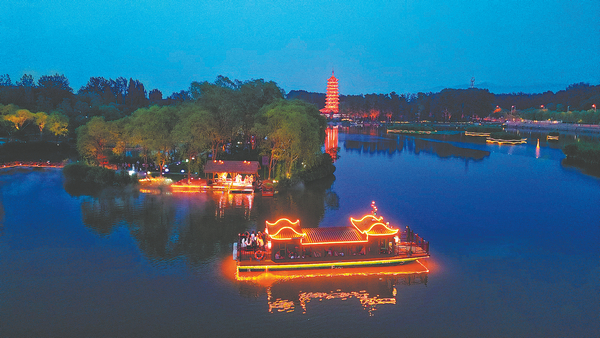
To spice up the tourist experience, Yanqing has rolled out night boating on the Guihe River, which starts from the district and runs 18.5 km from east to west.
The river has been transformed into a realm of mystery and serenity under the embrace of the night sky, with the gently swaying reeds, heart-shaped islands and an illuminated pagoda dotting the surroundings and casting beautiful reflections.
Several performances take place during the boat trip, highlighting stories about local people and the legendary ruler Shun of more than 4,000 years ago.
Zhai is positive that more visitors will come now that the Beijing culture and tourism authorities have put the district's night tours of the Great Wall and the Guihe River on the map.
"We have received positive feedback from tourists and will certainly expect more of them to come," Zhai says.
